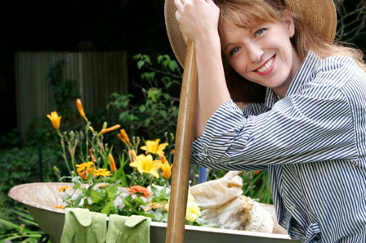
It is rare for us to be able to plant our garden before April 15 but, in rather shocking fashion, spring weather is upon us here in Canada nearly a month ahead of normal. So we are getting started early.
For those who think that gardening begins about May 20 we would like to offer some suggestions.
Our favorite vegetables are actually planted as soon as the ground can be worked in spring. We were introduced to Sugar Snap Peas by a friend some years back. He turned us on to how great it is to be eating fresh green peas (shell and all) in late May.
Since we had usually only just started planting by then, we listened close and have since then experimented with all sorts of early spring vegetables.
I believe this is the first year we will ever plant peas in March.
Jane wants to wait until the last week of March which would put us only 2 weeks ahead of normal, but I think I will sneak in a few feet of row right away and cover them with our usual straw mulch (just in case we get a bit of snow).
Peas are not our earliest crop.
We overwinter parsnips and carrots and eat them fresh from the ground all winter. The Parsnips are just starting to sprout a bit now but there is still 20 feet of row. For the 3 of us 2 mature parsnips pretty much makes a meal. Dig a few carrots to eat fresh along side of steamed ‘snips’ and you would think it was July at supper time.
I have never seen a vegetable more hardy. We have never had a crop failure, even in years when the ground frost broke past our straw barrier top cover and completely froze them down over 2 feet. Once they thawed they were as good as any other year.
And, they are good, the cold weather converts the starch to sugar and makes them as sweet as any candy you might want, and much better for you too. I dare say that Parsnips are my favorite vegetable as there is just not much that is fresh at this time of year, or one that stands up to our severe weather.
Truth is I used to hate them, until we left them in the ground over winter and discovered the hidden joys of starch conversion. Make sure you give that a try this year.
Spring break up is also the perfect time for transplanting perennial vegetables like asparagus. We actually mark several patches of ‘wild asparagus’ in the ditches around home along the road and each year we dig out a big pail or 2 of roots and have built up our asparagus patch to quite an impressive size.
The stalks are pretty easy to spot in summer once they have gone to top and we mark them with bright tape for spring digging. The patch is nearly full now, all for just a few minutes of prep work.
You can also transplant berries or trees during this dormant time. There is no better time to plant strawberries, raspberries, blueberries, or fruit trees. Right now we are in the process of expanding our raspberry patch with wild blackberry bushes from near our home, to go along with the red and yellow varieties.
We go out to the trails and dig a few and transplant them to our garden patch every year. They grow better in the improved soil and light conditions and then they are not near so far away too.
One other item on the agenda at this time of year is to bring a few potatoes inside, in a pail from the root cellar to sprout. We save our own seed and by bringing the seed inside to sprout we have early potatoes about June 20 most years, about a month ahead of regular planting of unsprouted seeds. It’s not more work either, just a bit of ahead of time planning.
I could certainly talk for hours about the subject of gardening. Jane and I only recently realized that we have been gathering garden information for over 40 years. She mentioned it to me last year how long we have been doing this now and she finally convinced me to put it in book form. If you would like to get yourself a copy or just read the first chapter to see for yourself, or would just like to talk about gardening you can visit Gardening Secrets with Les and Jane at their website.
Each year we expand our garden filling it with permanent producers and extending the season beyond the norm. In the past 20 years our garden has actually gotten smaller as we have reduced the row space and now only tolerate growing space, no roto-till, no digging (except to harvest vegetables) and the work has reduced 10 fold with the methods we now use. But… the yields have increased dramatically.
Just a few minutes a day is all it takes to have fresh vegetables year round, even in the depths of winter in Canada. Thankfully it’s spring a bit early so we can begin the process all over again for this year.